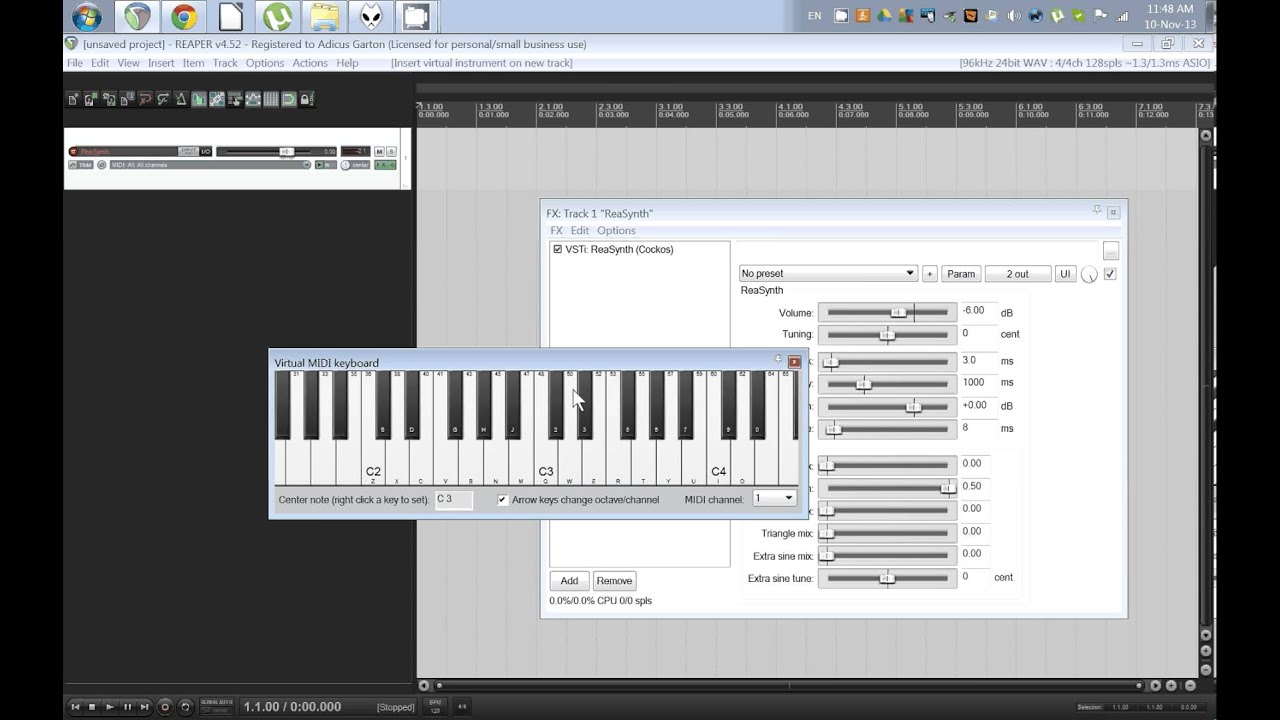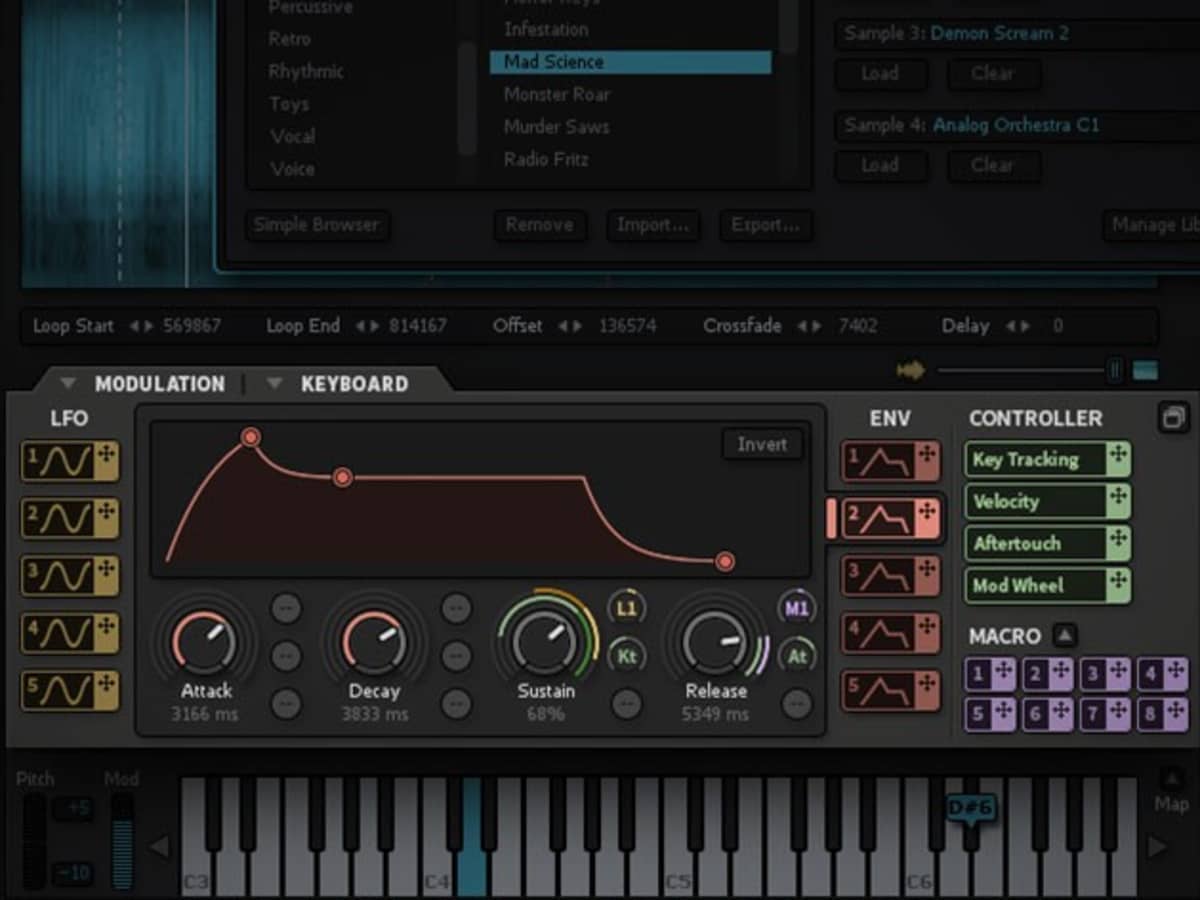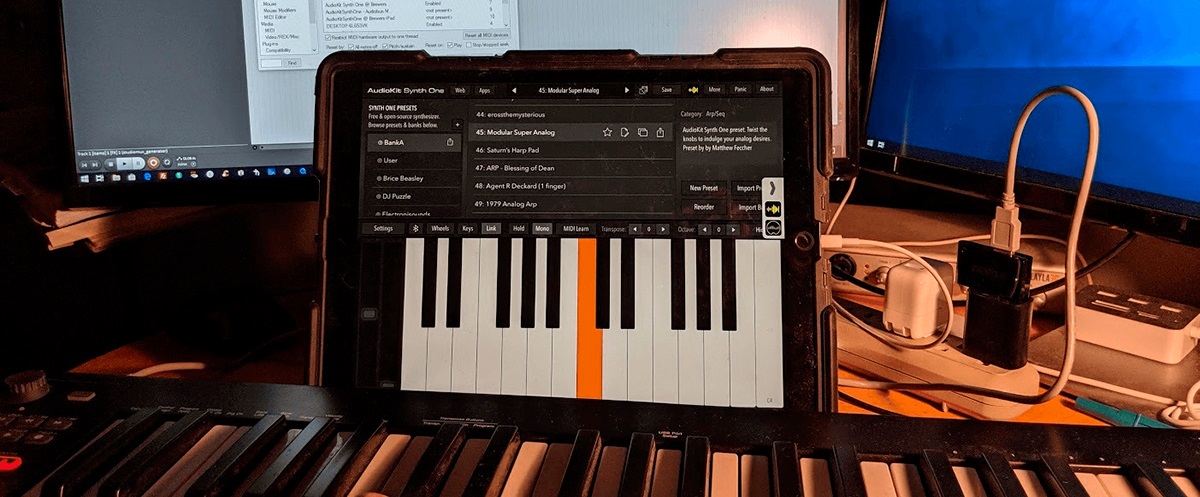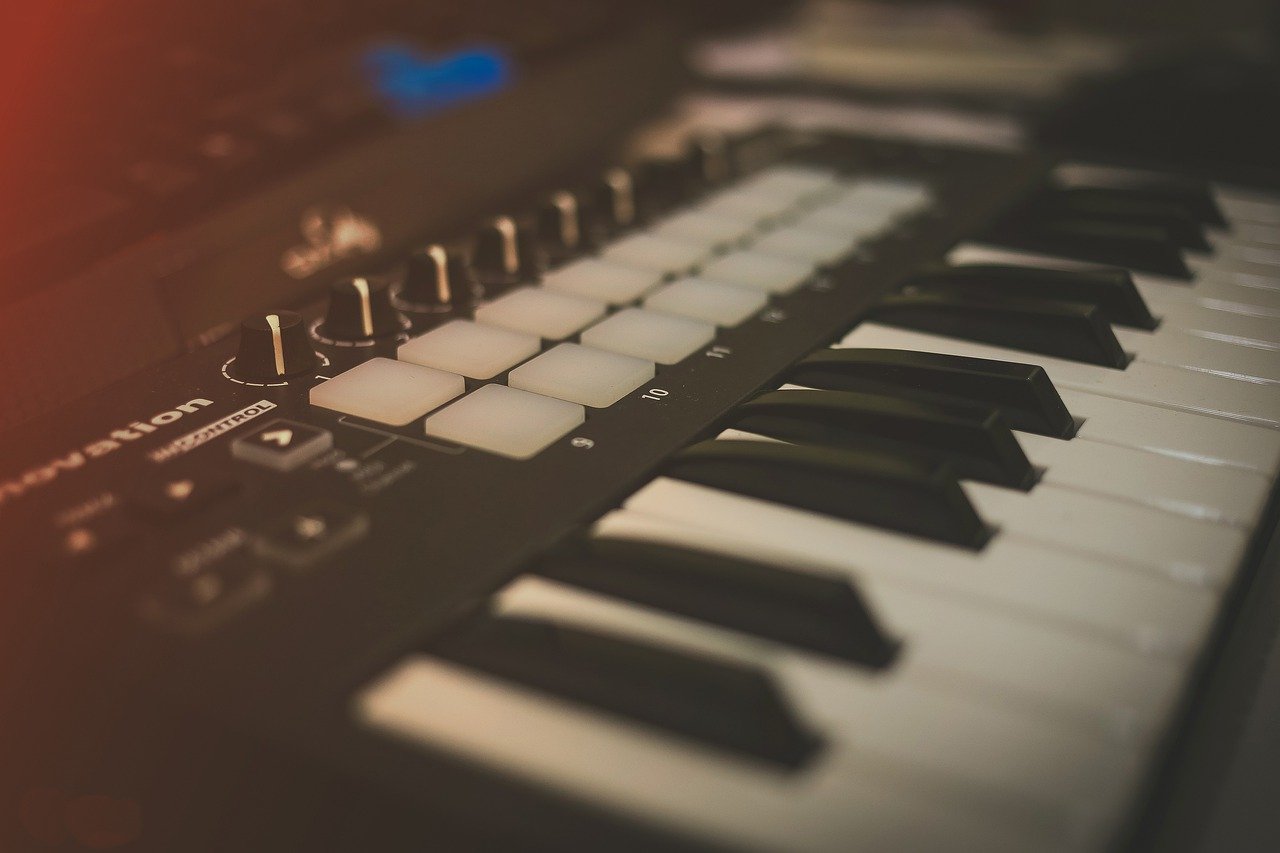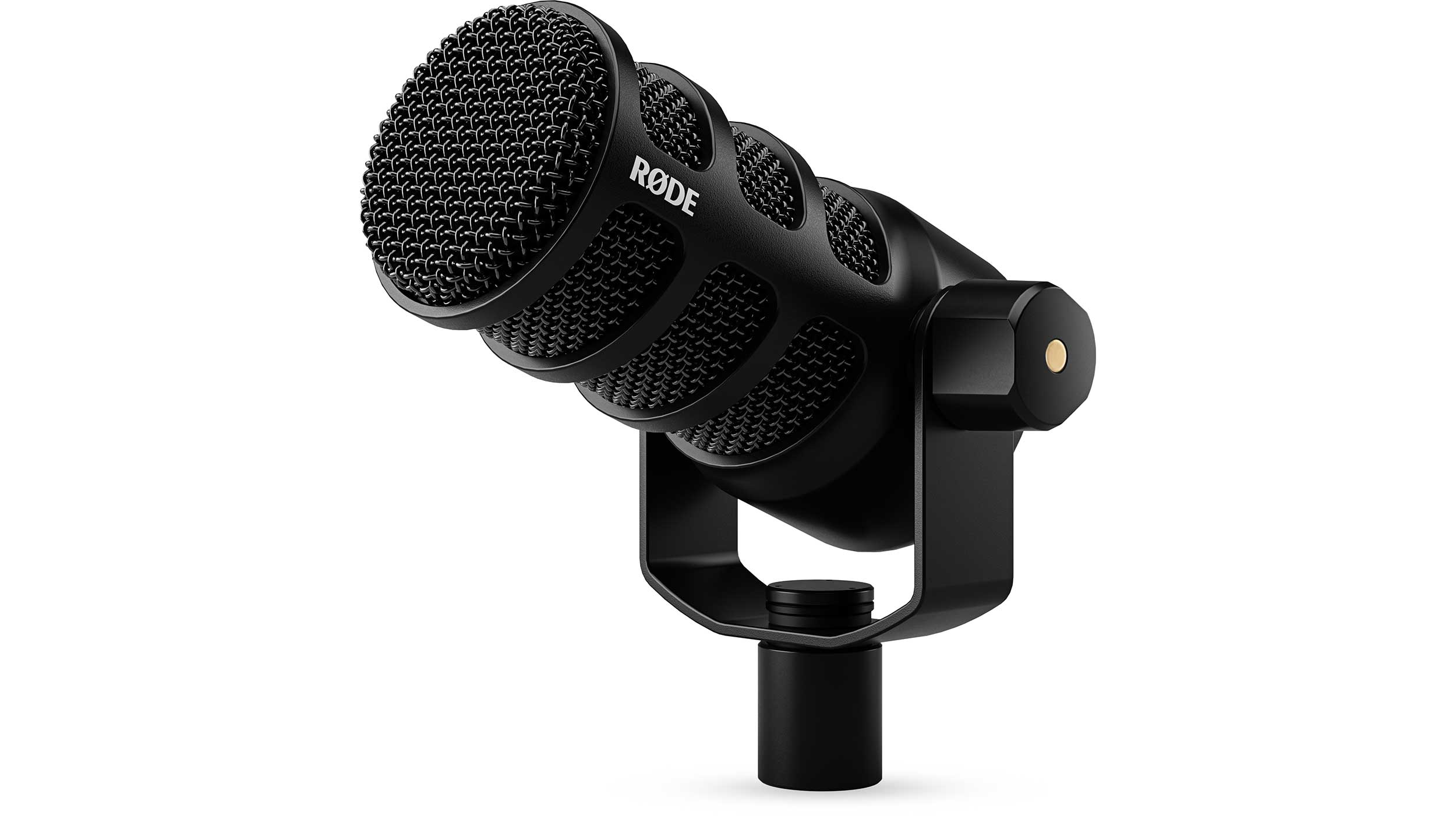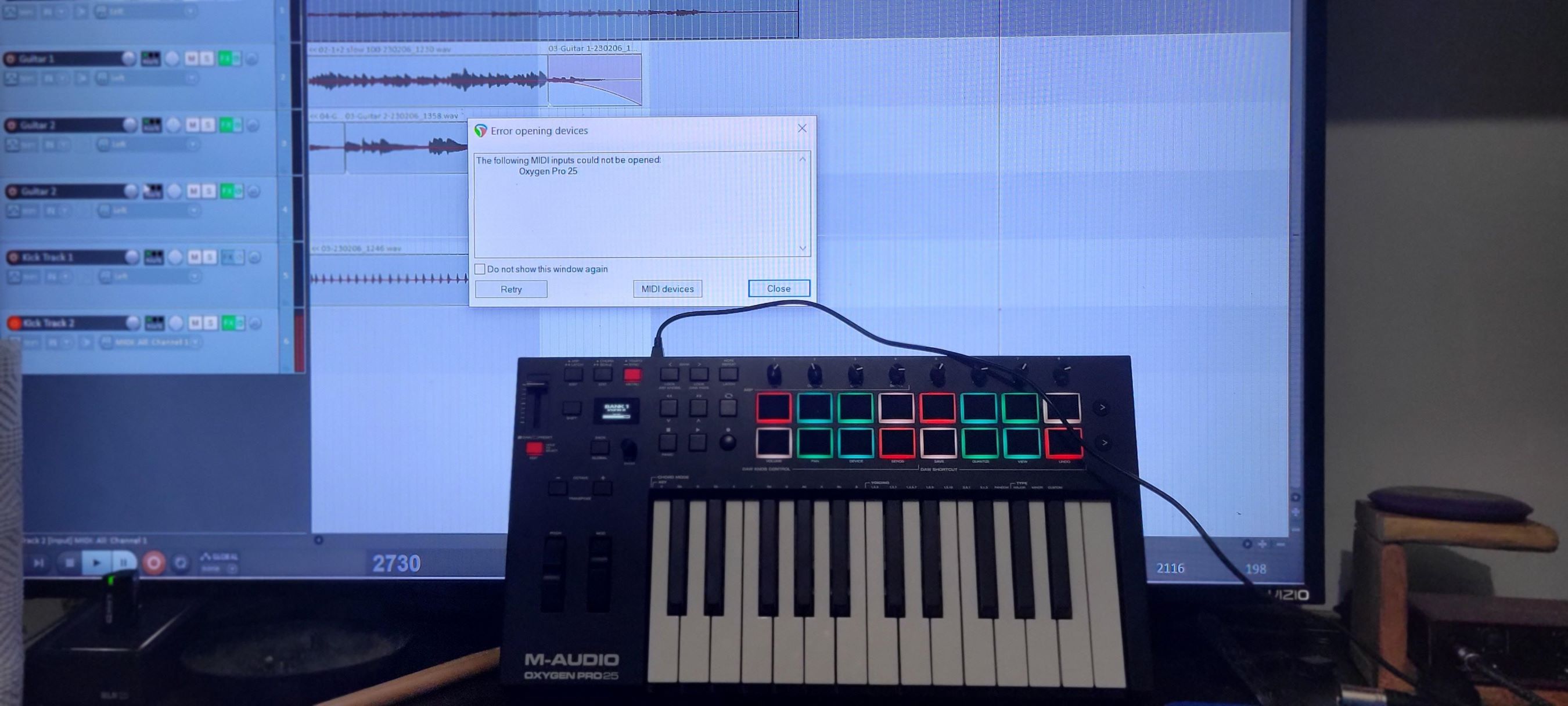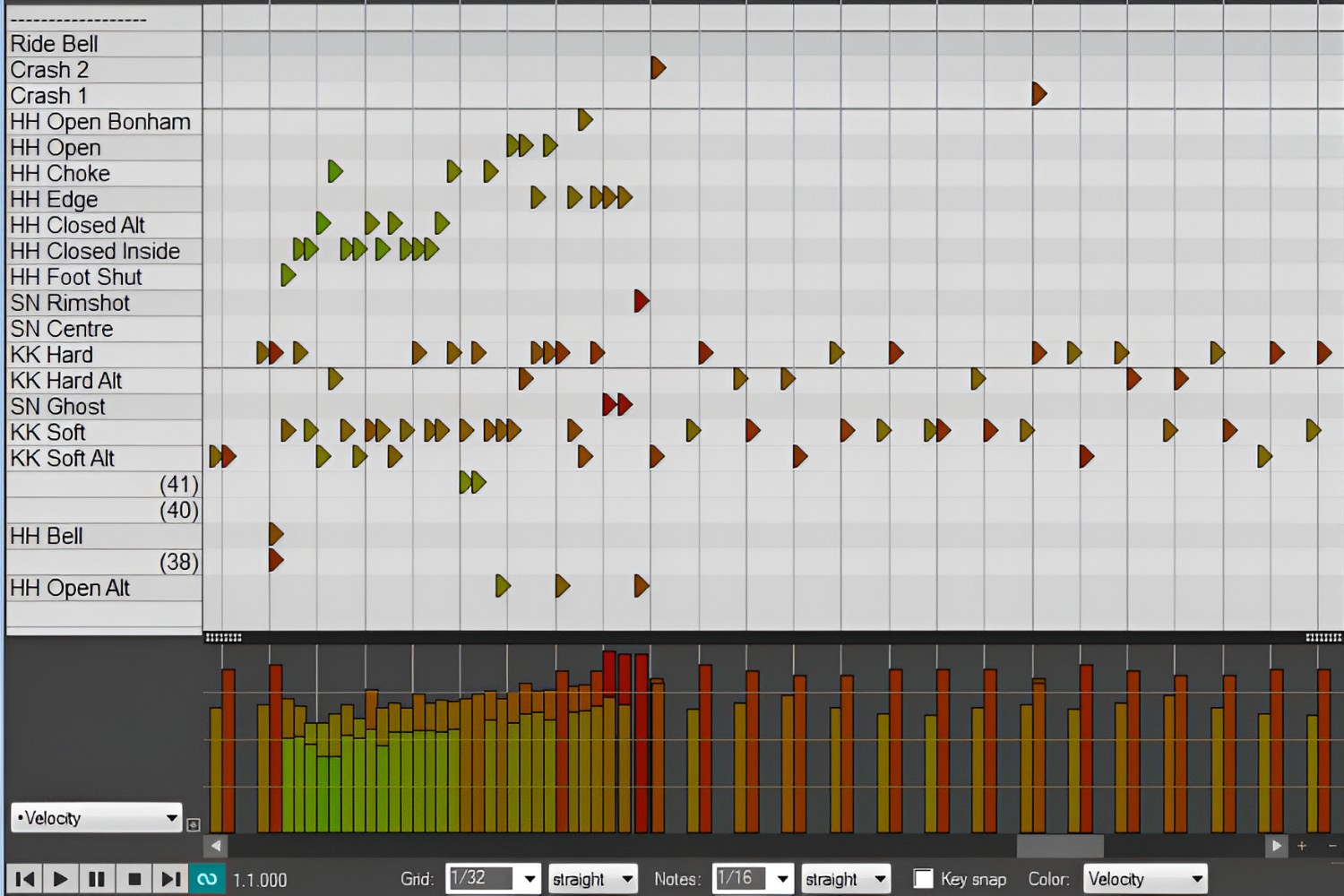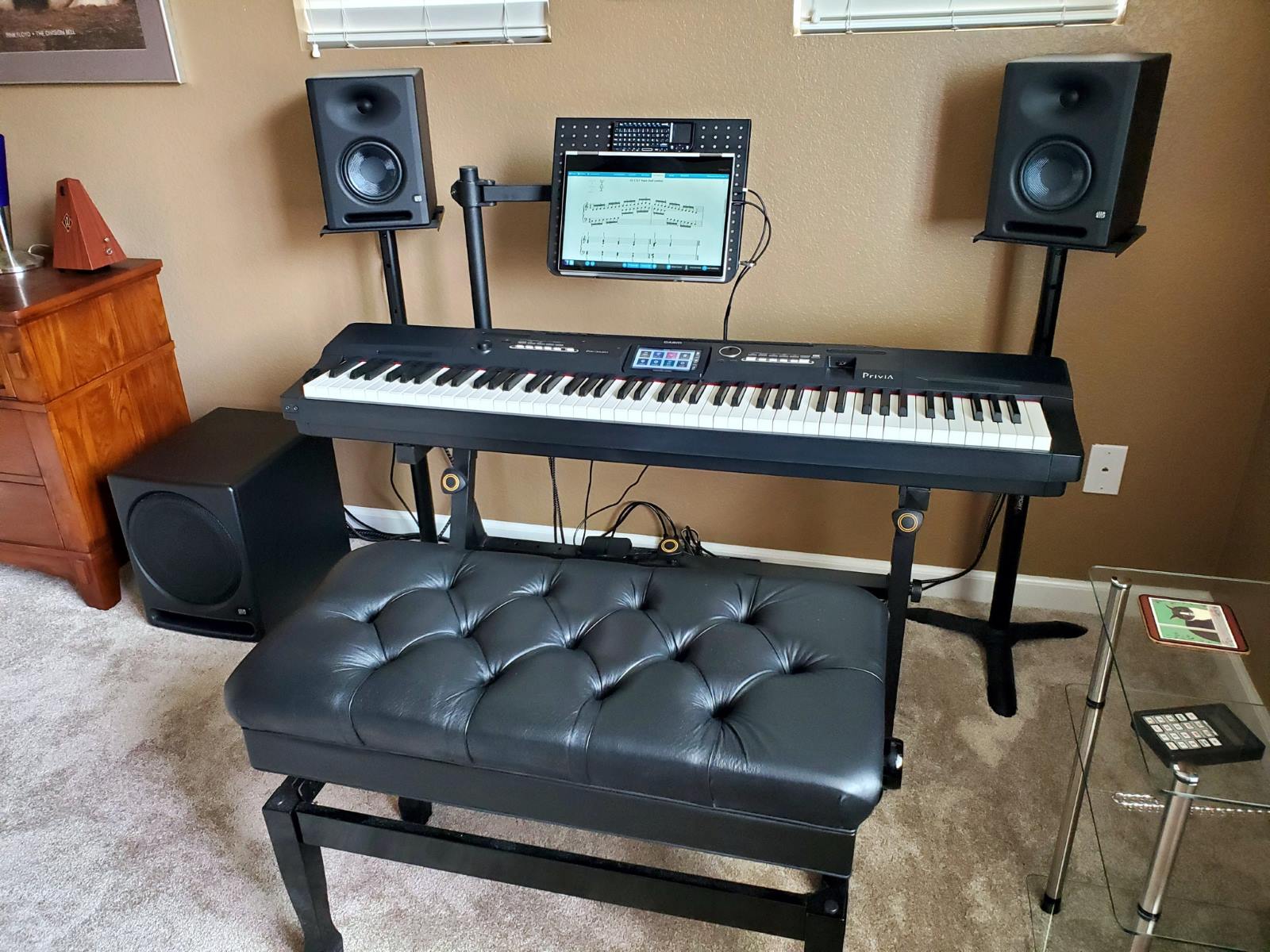Introduction
Welcome to the exciting world of music production with MIDI keyboards and Reaper! If you're passionate about creating music, then understanding how to use a MIDI keyboard in Reaper can significantly enhance your creative process. Whether you're a seasoned musician or just starting your journey in music production, the combination of a MIDI keyboard and Reaper's powerful digital audio workstation (DAW) offers endless possibilities for composing, recording, and producing music.
In this guide, we'll explore the essential steps to effectively integrate your MIDI keyboard with Reaper, allowing you to harness its full potential. From setting up your MIDI keyboard in Reaper to recording MIDI, editing notes, and utilizing keyboard controls for effects and parameters, we'll cover everything you need to know to make the most of this dynamic duo.
So, grab your MIDI keyboard, fire up Reaper, and let's dive into the fascinating realm of MIDI music production. Whether you're looking to lay down intricate melodies, craft compelling chord progressions, or experiment with innovative sound design, understanding how to leverage your MIDI keyboard in Reaper will open up a world of musical possibilities. Let's embark on this musical journey together and unlock the potential of your creativity.
Throughout this guide, we'll provide clear and actionable instructions, accompanied by helpful tips and insights to facilitate a seamless integration of your MIDI keyboard with Reaper. By the end of this journey, you'll not only have a firm grasp of the technical aspects but also an enriched understanding of the creative avenues that MIDI keyboards and Reaper can unlock.
Now, let's begin our exploration of using a MIDI keyboard in Reaper, where the fusion of technology and musical expression converges to empower your artistic endeavors. The stage is set, the instruments are ready, and the canvas awaits your musical brushstrokes. Let's embark on this exciting adventure and unleash the full potential of your MIDI keyboard in Reaper.
Setting Up Your MIDI Keyboard in Reaper
Before delving into the creative process, it’s essential to ensure that your MIDI keyboard is seamlessly integrated with Reaper, allowing for a smooth and efficient workflow. The initial setup involves configuring the MIDI input and output settings, enabling communication between your keyboard and the digital environment of Reaper.
To begin, connect your MIDI keyboard to your computer using a USB cable or MIDI interface, ensuring that the necessary drivers are installed and the device is recognized by your system. Once your MIDI keyboard is successfully connected, launch Reaper and navigate to the preferences menu. Here, you’ll find the MIDI devices settings, where you can select your MIDI keyboard as an input device. By enabling the MIDI input, Reaper will recognize and respond to the signals transmitted by your keyboard, enabling you to record and manipulate MIDI data seamlessly.
Furthermore, configuring the MIDI output settings allows Reaper to transmit MIDI data back to your keyboard, facilitating the use of virtual instruments and external hardware modules. By establishing this bidirectional communication, you can harness the full potential of your MIDI keyboard, utilizing it as a versatile controller for virtual instruments and external sound modules within Reaper’s environment.
While setting up your MIDI keyboard in Reaper, it’s crucial to ensure that the MIDI channels and mappings are configured according to your preferences and the requirements of your musical projects. By customizing these settings, you can tailor the behavior of your MIDI keyboard to suit your creative workflow, optimizing efficiency and enhancing the expressive capabilities of the instrument.
As you navigate through the settings and preferences of Reaper, you’ll discover a myriad of customization options, allowing you to fine-tune the integration of your MIDI keyboard with the software. Whether it’s adjusting velocity curves, assigning MIDI control messages, or configuring channel routing, Reaper provides a comprehensive set of tools to personalize the interaction between your MIDI keyboard and the digital workspace.
By meticulously setting up your MIDI keyboard in Reaper, you lay the foundation for a seamless and immersive music production experience. The harmonious integration of hardware and software empowers you to unleash your creativity, seamlessly translating musical ideas into captivating compositions. With the technical groundwork established, you’re now ready to embark on a musical journey where your MIDI keyboard and Reaper converge to amplify your artistic vision.
Assigning MIDI Inputs and Outputs
Once your MIDI keyboard is connected and configured within Reaper, the next crucial step is to assign MIDI inputs and outputs, enabling seamless communication between your keyboard and the software’s virtual instruments and external hardware modules. By defining these connections, you establish a direct pathway for MIDI data to flow between your keyboard and the digital realm of Reaper, facilitating real-time interaction and creative exploration.
In Reaper, the process of assigning MIDI inputs involves specifying which MIDI devices and channels will be used to transmit data into the software. This configuration allows your MIDI keyboard to communicate with virtual instruments, MIDI tracks, and various elements within the Reaper environment. By designating the MIDI input sources, you ensure that the signals generated by your keyboard are accurately captured and processed by Reaper, laying the groundwork for recording, playback, and real-time performance.
Furthermore, assigning MIDI outputs in Reaper enables the software to transmit MIDI data back to your keyboard, facilitating the control of external hardware modules, synthesizers, and other MIDI-compatible devices. By establishing these output connections, you empower your MIDI keyboard to function as a versatile controller, seamlessly interfacing with both software-based instruments and external sound-generating equipment.
Reaper’s flexible routing capabilities allow you to assign specific MIDI inputs and outputs to individual tracks, instruments, and effects, providing a granular level of control over the flow of MIDI data within your projects. This level of customization empowers you to tailor the behavior of your MIDI keyboard, optimizing its functionality for diverse musical scenarios and production requirements.
As you navigate through the MIDI input and output settings in Reaper, you’ll encounter a wealth of options for customizing the behavior of your MIDI keyboard, including channel assignments, velocity curves, and MIDI control mappings. These parameters allow you to fine-tune the responsiveness and expressive capabilities of your MIDI keyboard, ensuring that it seamlessly integrates with your creative workflow and musical preferences.
By adeptly assigning MIDI inputs and outputs in Reaper, you establish a cohesive link between your MIDI keyboard and the software, fostering a symbiotic relationship that amplifies your creative potential. This seamless integration empowers you to explore new sonic territories, experiment with innovative sound design, and breathe life into your musical ideas with the expressive power of your MIDI keyboard within the dynamic environment of Reaper.
Recording MIDI with Your MIDI Keyboard
Recording MIDI with your MIDI keyboard in Reaper opens a gateway to capturing your musical ideas with precision and nuance. Whether you’re laying down melodic phrases, crafting intricate chord progressions, or exploring rhythmic patterns, the process of recording MIDI seamlessly translates your expressive performances into digital data, ready to be sculpted and refined within the software.
To initiate MIDI recording, create a new MIDI track in Reaper and ensure that your MIDI keyboard is selected as the input device for the track. Once the input is configured, arm the track for recording, and you’re poised to capture the musical gestures emanating from your MIDI keyboard. As you play, Reaper faithfully captures the MIDI data, preserving the subtleties of your performance, including note velocities, pitch bends, modulation, and other expressive nuances.
Reaper’s robust recording capabilities allow for real-time MIDI capture, enabling you to unleash your creativity without constraints. Whether you’re improvising, composing, or experimenting with musical ideas, the seamless integration of your MIDI keyboard with Reaper empowers you to effortlessly document your musical inspirations with unparalleled fidelity.
Furthermore, Reaper’s versatile recording modes, such as overdubbing and punch recording, provide flexible options for layering MIDI performances, refining musical passages, and iteratively building complex arrangements. These features enable you to refine your compositions with precision, layering multiple takes to craft compelling musical narratives while harnessing the expressive capabilities of your MIDI keyboard.
As you immerse yourself in the process of recording MIDI with your MIDI keyboard in Reaper, you’ll discover a wealth of editing tools and functionalities that allow you to refine and manipulate the captured MIDI data. From quantization and note editing to velocity adjustments and MIDI parameter control, Reaper empowers you to sculpt and shape your recorded performances with meticulous detail, ensuring that your musical vision is realized with unparalleled clarity.
By seamlessly recording MIDI with your MIDI keyboard in Reaper, you embark on a journey of musical documentation and creative expression. The fusion of technology and artistry converges within the digital realm of Reaper, where your performances are immortalized as MIDI data, ready to be transformed, embellished, and woven into captivating musical compositions that reflect your unique voice and creative sensibilities.
Editing MIDI Notes in Reaper
Once you’ve recorded MIDI with your keyboard in Reaper, the software’s comprehensive suite of editing tools empowers you to refine, manipulate, and embellish the captured MIDI notes with precision and creativity. Whether you’re fine-tuning melodic passages, adjusting rhythmic patterns, or exploring harmonic variations, the process of editing MIDI notes in Reaper offers a wealth of possibilities for shaping your musical ideas into cohesive compositions.
Reaper’s intuitive MIDI editor provides a versatile workspace where you can visualize and manipulate MIDI notes with ease. From adjusting note durations and velocities to quantizing rhythmic elements and refining pitch accuracy, the MIDI editor offers a comprehensive set of tools to sculpt the nuances of your performances, ensuring that your musical expressions are faithfully translated into the digital domain.
Furthermore, Reaper’s MIDI editing capabilities extend to advanced functionalities such as note splitting, merging, and transposition, allowing you to restructure and recontextualize musical phrases with seamless fluidity. These features empower you to explore alternative musical arrangements, experiment with compositional variations, and breathe new life into your MIDI performances with creative freedom.
Reaper’s support for MIDI control messages, including modulation, pitch bend, and aftertouch, enables you to infuse your MIDI notes with expressive articulations and dynamic nuances, enhancing the emotive impact of your musical passages. By harnessing these control messages within the MIDI editor, you can imbue your performances with a human touch, enriching your compositions with nuanced gestures and evocative musical expressions.
As you delve into the realm of MIDI note editing in Reaper, you’ll discover a wealth of transformative tools and functionalities that empower you to unleash your creative vision. Whether it’s shaping intricate melodies, crafting compelling harmonies, or refining rhythmic intricacies, the MIDI editing capabilities of Reaper provide a canvas for artistic exploration, where your musical ideas are refined and polished with meticulous attention to detail.
By adeptly editing MIDI notes in Reaper, you embark on a journey of musical refinement and creative exploration, where your performances are elevated to new heights of expressiveness and coherence. The fusion of technical precision and artistic sensibility converges within the digital realm of Reaper, where your MIDI notes are sculpted, refined, and imbued with the essence of your creative vision, resonating with clarity and emotive resonance.
Using MIDI Keyboard Controls for Effects and Parameters
Harnessing the expressive power of your MIDI keyboard in Reaper extends beyond performance and recording, as it also serves as a versatile controller for manipulating effects and parameters within the software. By leveraging the tactile interface of your MIDI keyboard, you can intuitively modulate virtual instruments, effect plugins, and various parameters, infusing your musical productions with dynamic textures and sonic nuances.
Reaper’s robust support for MIDI control mapping enables you to assign MIDI keyboard controls to a myriad of parameters, offering a hands-on approach to shaping the sonic characteristics of your music. Whether it’s adjusting filter cutoff frequencies, modulating reverb levels, or manipulating synthesizer parameters, the seamless integration of your MIDI keyboard as a control surface empowers you to sculpt and shape sound with precision and immediacy.
Furthermore, Reaper’s customizable MIDI control assignments allow you to tailor the behavior of your MIDI keyboard to suit specific instruments and effects, providing a personalized interface for real-time manipulation and expressive performance. This level of customization fosters a symbiotic relationship between your musical gestures and the sonic responses within Reaper, facilitating a dynamic interplay that enriches your creative process.
By assigning MIDI keyboard controls to effects and parameters in Reaper, you unlock a realm of creative possibilities, where your performances transcend traditional boundaries and embrace a fluid continuum of sonic exploration. The tactile nature of MIDI control enables you to infuse your musical expressions with nuanced gestures, evocative swells, and dynamic shifts, imbuing your compositions with a captivating sense of liveliness and emotive depth.
Reaper’s support for MIDI control messages, including continuous controllers, channel pressure, and pitch bend, provides a versatile palette for expressive modulation, allowing you to imbue your musical passages with a rich tapestry of sonic articulations. Whether it’s shaping timbral textures, sculpting dynamic contours, or animating rhythmic elements, the integration of MIDI keyboard controls within Reaper amplifies your capacity for sonic expression and creative exploration.
As you navigate the terrain of using MIDI keyboard controls for effects and parameters in Reaper, you’ll discover a world of sonic manipulation and expressive potential at your fingertips. The seamless fusion of performance, control, and sonic sculpting converges within the digital realm of Reaper, where your MIDI keyboard serves as a conduit for emotive gestures, dynamic modulations, and transformative sonic expressions, enriching your music with unparalleled depth and character.
Conclusion
Congratulations on embarking on a captivating journey through the integration of MIDI keyboards with Reaper, where the convergence of technology and artistry amplifies your creative potential in music production. As you’ve navigated the essential steps of setting up, recording, editing, and utilizing MIDI keyboard controls within Reaper, you’ve unlocked a realm of possibilities for musical expression and production.
By seamlessly integrating your MIDI keyboard with Reaper, you’ve established a dynamic synergy between hardware and software, fostering a seamless workflow that empowers you to translate your musical inspirations into captivating compositions with precision and nuance. The tactile interface of your MIDI keyboard serves as a conduit for expressive performances, real-time modulation, and intuitive control, enriching your musical productions with a human touch and emotive depth.
Furthermore, the versatile editing tools and MIDI control mapping capabilities within Reaper provide a canvas for artistic exploration, where your musical ideas are refined, sculpted, and imbued with sonic character. Whether it’s shaping MIDI notes, manipulating effects, or modulating parameters, the seamless fusion of creativity and technical precision empowers you to craft compelling musical narratives that resonate with clarity and emotive resonance.
As you continue to explore the boundless possibilities of using MIDI keyboards in Reaper, remember that the fusion of technology and artistry is a catalyst for creative innovation. Whether you’re composing intricate melodies, experimenting with sound design, or sculpting dynamic arrangements, the integration of MIDI keyboards with Reaper amplifies your capacity for musical expression, enabling you to realize your creative vision with unparalleled clarity and depth.
So, as you venture forth into the realm of MIDI music production with Reaper and your MIDI keyboard, embrace the limitless potential that awaits at the intersection of creativity and technology. Let your musical journey be guided by curiosity, fueled by passion, and enriched by the harmonious convergence of art and innovation. With Reaper as your creative ally and your MIDI keyboard as a vessel for expressive gestures, the symphony of your creativity unfolds with boundless possibilities, resonating with the essence of your artistic vision.







